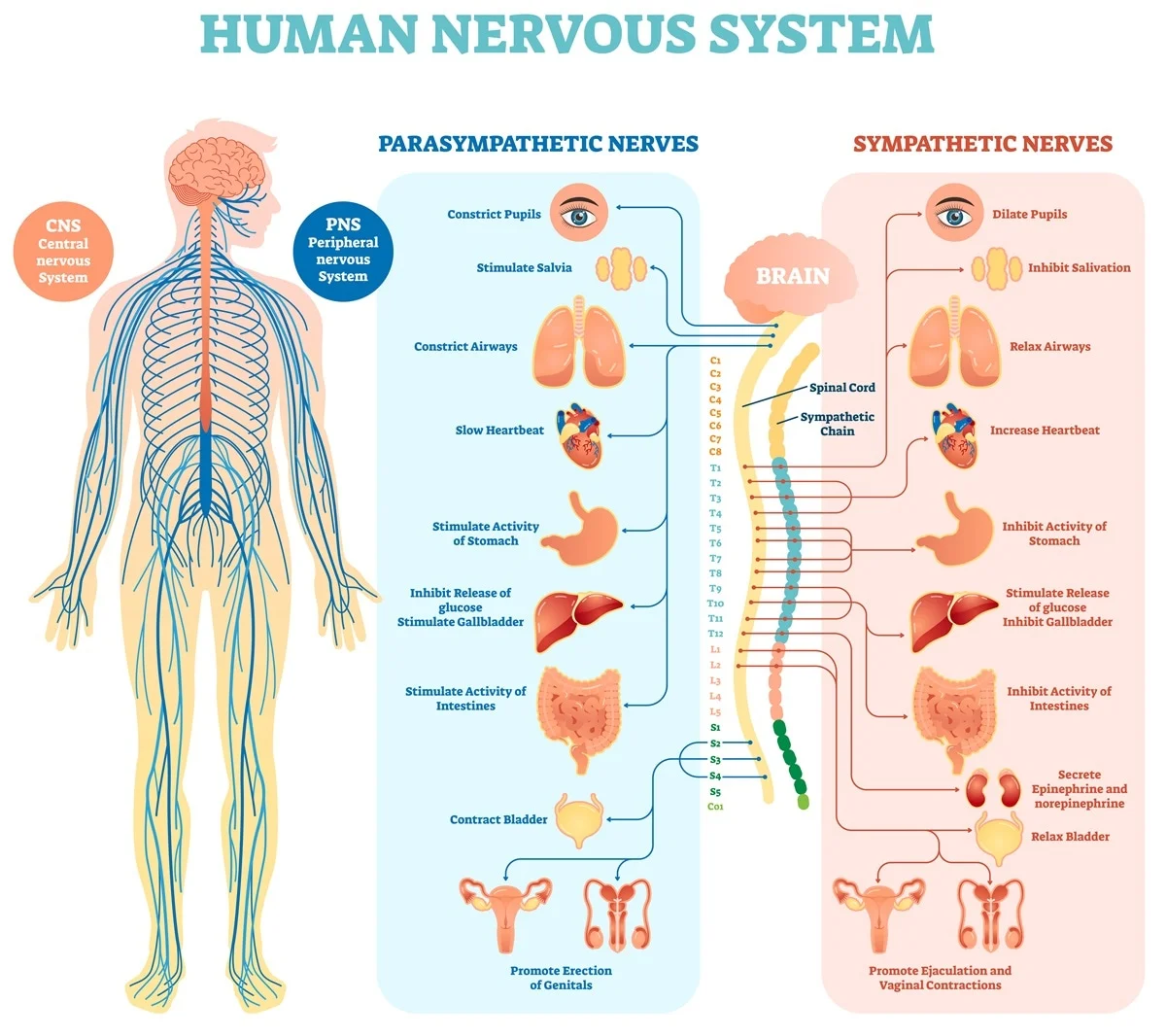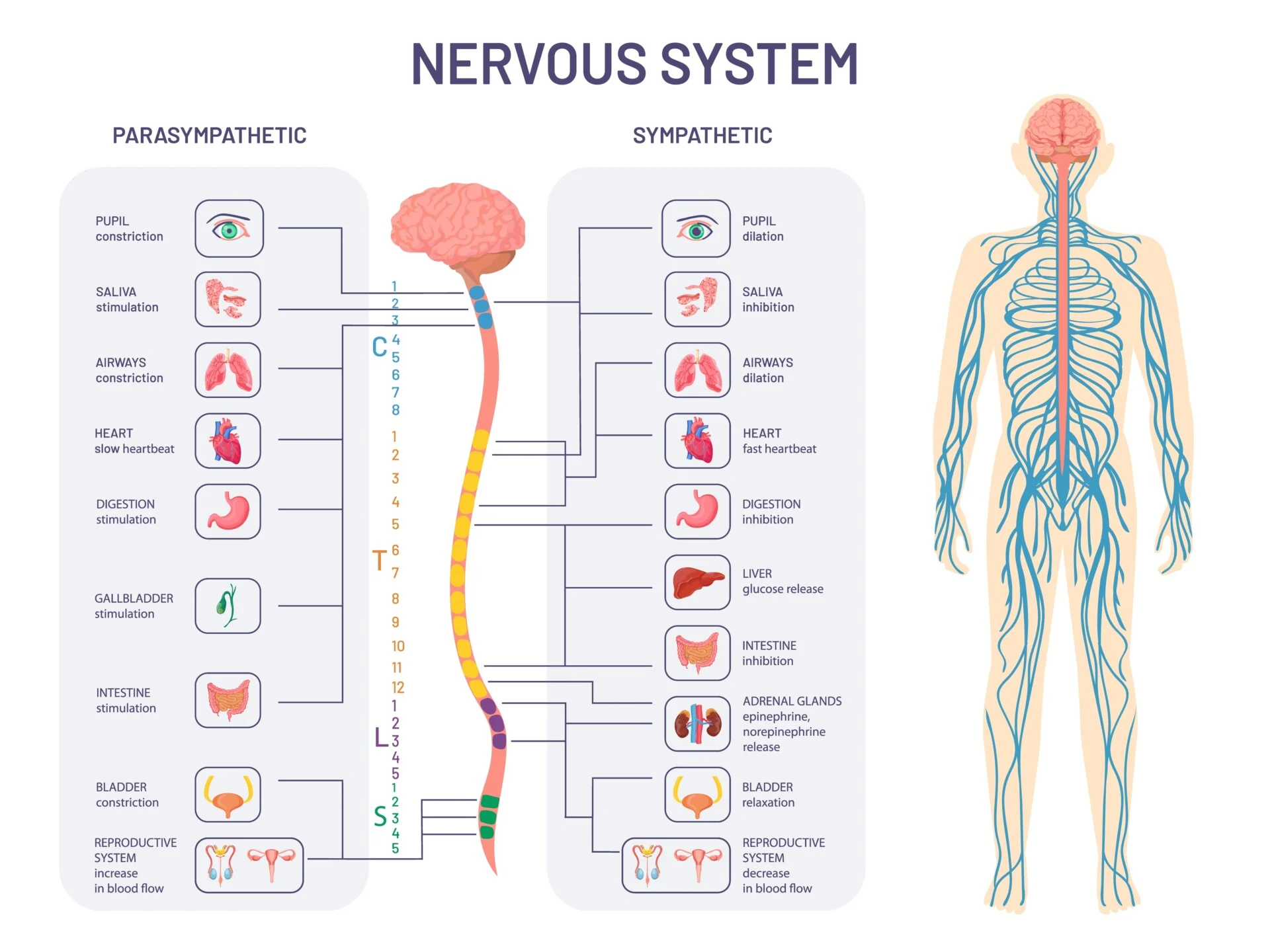PNS and ANS-The course is designed for the basic understanding of anatomical structures and physiological functions of human body, musculoskeletal system, digestive system, respiratory system; cardiovascular system; urinary system, endocrine system, reproductive system, nervous system, hematologic system, sensory organs, integumentary system, and immune system.The aim of the course is to acquire knowledge and skills regarding anatomy and physiology.

PNS and ANS
Peripheral nervous system (PNS):
The part of the nervous system, which lies outside the central nervous system (Brain and Spinal cord) e in the periphery
Classification
A. Peripheral Nervous system (PNS)
a. Somatic
- Spinal nerves 31 pairs
- Cranial nerves 12 pairs
b. Autonomic
- Sympathetic
- Para-sympathetic
Functions of PNS:
1. Contraction of muscle
2. Secretion of gland.
3. Carrying the sensory stimuli from the skin, mucous membrane & deeper structures.
ANS
The ANS was originally namedautonomic (auto= self; nomic law) because it was thought to function in a self-governing manner Althoughthe ANS usually does operate without consciouscontrol from the cerebral cortex, it is regulated by otherbrain regions, mainly the hypothalamus and brain stem.
Subdivision:
The autonomic nervous system has two major subdivision
- Sympathetic (Thoracolumbar outflow)
- Parasympathetic (Craniosacral outflow)
Functions:
The autonomic nervous system helps regulate the activities of cardiac muscle, smooth muscles, and glands. In this regulation, impulses are conducted from the CNS byan axon that synapses with a second autonomic neuron. It is the axon of this second neuron in the pathway that innervates the involuntary effectors.
(Ref.- Ross & Wilson 9th ed, P-155 + J. Tortora, 8 edition, P-284-286)

CSF
Definition:-
CSF (cerebrospinal fluid) is a clear, colorless and slightly alkaline fluid that carries oxygen, glucose, and other needed chemicals from the blood to neurons and neuroglia and removes wastes and toxic substances produced by brain and spinal cord cells. It also protects the brain and spinal cord against chemical and physical injury.
The volume:-
- Normally, the volume of CSF remains constant at 80 to 150 ml. (3 to 5 oz) because it is absorbed as rapidly as it is formed.
- CSF is secreted continuously at a rate of about 0.5 ml per minute. (720 ml per day).
Composition of CSF 1-
- Water
- Mineral salts
- Glucose
- Plasma proteins: small amounts of albumin and globulin.
- Creatinine Urea
- A few leukocytes
The sites of production:-
The sites of CSF production are the choroid plexuses (membrane like), which are specialized networks of capillaries in the walls of the ventricles. Covering the choroid plexus capillaries are ependymal cells, which form cerebrospinal fluid from blood plasma by filtration and secretion.
Circulation of CSF :-
It circulates through the subarachnoid space (between the arachnoid mater and pia mater), around the brain and spinal cord, and through cavities in the brain known as ventricles (little cavities). There are four ventricles: two lateral ventricles, one third ventricle, and one fourth ventricle, Openings connect them with one another, with the central canal of the spinal cord, and with the subarachnoid space.
Reabsorption and drainage:-
CSF is gradually reabsorbed into the blood through arachnoid villi, which are fingerlike extensions of the arachnoid mater. The CSF drains primarily into a vein called the superior sagittal sinus.

Functions of cerebrospinal fluid:-
- CSF supports and protects the brain and spinal cord.
- It maintains a uniform pressure around these delicate structures.
- It acts as a cushion and shock absorber between the brain and cranial bones.
- It keeps the brain and spinal cord moist and there may be interchange of substances between CSF and nerve cells, such as nutrients and waste products.
(Ref:-Ross & Wilson 9th ed, P-148-149 +J. Tortora, 8 edition, P-263)
Read more:
